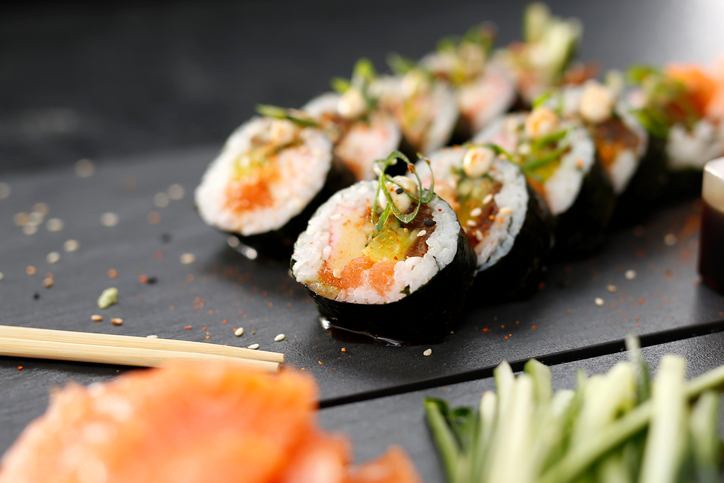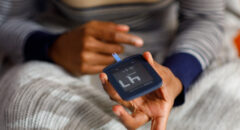is sushi good for diabetics One of the most popular dishes on a Japanese menu is sushi. Since the first sushi restaurants opened in the 1960s, sushi has soared in popularity. Today there are over 4,000 sushi restaurants across the states. You can even find sushi in your local specialty food market, supermarket or convenience store.
One of the most popular dishes on a Japanese menu is sushi. Since the first sushi restaurants opened in the 1960s, sushi has soared in popularity. Today there are over 4,000 sushi restaurants across the states. You can even find sushi in your local specialty food market, supermarket or convenience store.
Traditional sushi is low in fat, saturated fat and cholesterol. However, “Americanized” decadent sushi – made with less healthy ingredients can be high in fat, saturated fat, cholesterol and carbohydrate.
The following tips will make your sushi more diabetes friendly.
Get Familiar with the Varieties of Sushi
Nigiri is a favorite type in which a thumb-size mound of vinegared rice is topped off with a slice of raw fish. Another familiar style of sushi is Maki, which is made by arranging a layer of dried seaweed on a bamboo mat, and then artfully arranging the ingredients (usually sushi rice, some fish and finely chopped vegetables) on the seaweed and rolling it tightly into a long tube. Ultimately, the roll is sliced crosswise into rounds with the seaweed serving as the outer covering.
Uramaki is sometimes called inside-out roll because the rice is on the outside and the seaweed is hidden inside. When raw fish is sliced thinly and served without anything added, it is called sashimi.
Go Easy On the Carbs
If you have the option, choose...
...sashimi over sushi, as the rice found in sushi can often add a generous amount of carbohydrates.
Consider maki sushi instead of uramaki rolls. There tends to be more rice on the uramaki rolls which contributes a higher carbohydrate content. A six piece maki tuna roll has 30 grams of carbohydrate and 175 calories.
Decadent sushi rolls such as tempura, spicy tuna or Philadelphia rolls contain deep fried ingredients, mayonnaise or cream cheese, making them high in sodium, fat, and carbohydrate.
Just six pieces of a decadent sushi roll has almost 80 grams of carbohydrate – the carb equivalent of 5 slices of bread – and up to 385 calories. So, if you must have a decadent roll; reduce the carbs and calories by sharing it with a friend.
Choose Your Sushi Restaurant Wisely
Having diabetes can leave you more susceptible to developing infections and contracting a foodborne illness. Raw fish may carry parasites, bacteria, and viruses that cause foodborne illness. The Food and Drug Administration (FDA) requires freezing of raw fish used for sushi and sashimi. Thorough freezing will kill the parasites. Raw fish is also highly perishable. Trained sushi chefs know how to buy, examine, store and handle fish to minimize the risk of foodborne illness.
Whether you are eating at a sushi bar or fine Japanese restaurant, to ensure you are getting fresh fish, choose a place that’s busy and serves a lot of sushi. The high turnover gives you a better chance of getting fresh fish. Also, if you don’t want to take chances with raw fish, most sushi menus offer vegetarian sushi or sushi made with cooked fish.
 Constance Brown-Riggs, MSEd, RD, CDE, CDN is a registered dietitian, certified diabetes educator, national speaker and author of The African American Guide to Living Well with Diabetes.. She is Dannon One Yogurt Every Day Nutrition Advisor.
Constance Brown-Riggs, MSEd, RD, CDE, CDN is a registered dietitian, certified diabetes educator, national speaker and author of The African American Guide to Living Well with Diabetes.. She is Dannon One Yogurt Every Day Nutrition Advisor.









